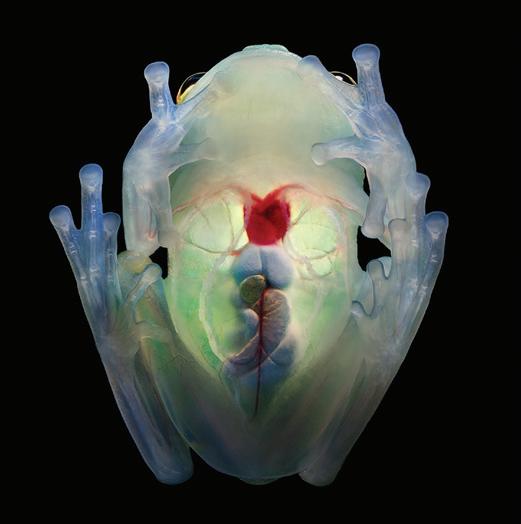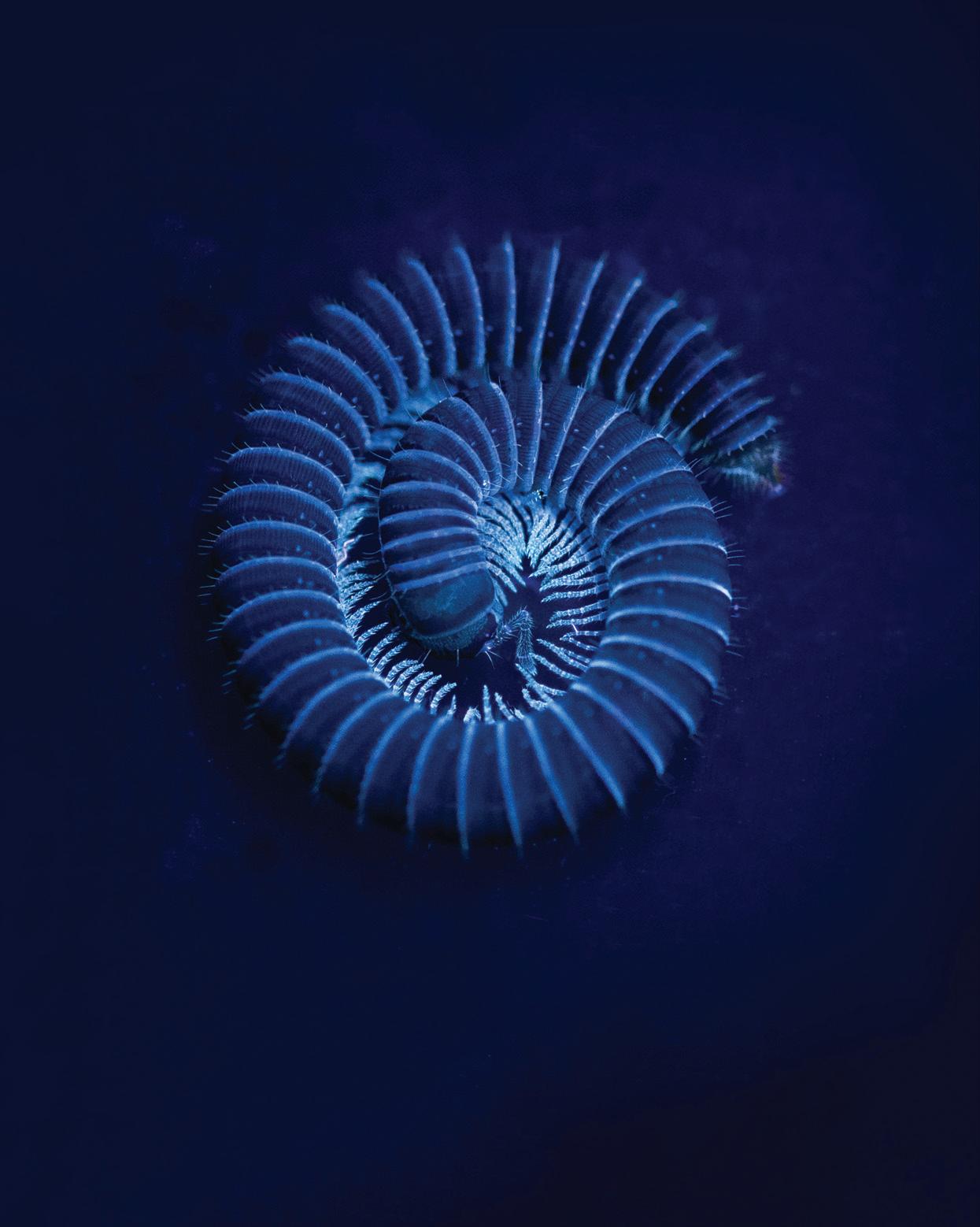
3 minute read
Capturing nature
from The FUSE 2021
Sustainability is embedded throughout Falmouth, which not only means using sustainable practices and products, but highlighting issues around conservation, biodiversity and the environment.
For students and graduates of the Marine and Natural History Photography BA, this has included telling stories about native Cornish Black Bees, making films in the Galapagos Islands about saving endemic land birds and capturing the flight of blue faced monkeys in David Attenborough’s most recent series ‘Seven Worlds, One Planet’.
Here are just some of the stunning images of nature and wildlife that our students have captured recently:

Ellie Letch, ' Saviour of the Soil'
Ellie Letch’s image ‘Saviour of the Soil’ celebrates soil, the heart and soul of our planet, at Ballylagan Organic Farm in Ireland. It’s estimated there are 12.8 quadrillion living organisms within the top 8cm of British soil alone.
Jay Wong, 'Yuruani Glass Frog'
Jay Wong’s image, ‘Yuruani Glass Frog’ depicts a fragile species that is vulnerable to threats from humans. Two thirds of all glass frog species are in decline due to deforestation and environmental changes.
James Wylie, 'White-Legged Snake Millipede'

James Wylie uses ultraviolet light to reveal a millipede fluorescing naturally.

Hedvika Michnova, ‘It’s Bean Too Hot’
‘It’s Bean Too Hot’ by Hedvika Michnova tells the story of coffee farmers whose livelihoods are at stake as they are experiencing prolonged periods of drought, massive rains, and an increase of pests and diseases. With coffee plants being very sensitive to the changing weather, farmers are losing their income and feel helpless for the future.

Katie Waddington, 'Mosaic vision'
Katie Waddington’s vibrant image ‘Mosaic vision’ zooms in on a small section of the compound eye of a blue-bottle fly, Calliphora vomitoria. A fly’s eye is made up of thousands of individual visual receptors called ommatidia, which can be seen up close in this image. By capturing and exhibiting the beautiful patterns that are normally hidden to the naked eye, this artwork serves as an open invitation to reconsider the place of these invaluable insects in our world today.
STAY SUSTAINABLE
Sustainability is a big deal, but we can all make a big difference through the cumulative, small conscientious changes we make in our lives. Falmouth is an ideal place to make a sustainable start to this new chapter of your life. We've got a high street full of places that will help you shop more sustainably.
GO PLASTIC-FREE
Why not try to reduce your plastic use? Head to ‘un_rap’, the local zero-waste shop, to discover how easy it is to cut your plastic use through refilling containers with dry food, swapping-in soap bars and cardboard-packaged deodorant, and grabbing some loose snacks like dried mango. Oh, and the plastic-free peanut butter is a MUST try!
ENVIRONMENTALLY-FRIENDLY FASHION
Clothing has a massive carbon footprint, but it’s easy to minimise – how about picking that “new year, new me” outfit from a charity shop? Shopping second-hand is cheaper, fun, and may surprise you in terms of quality. This is especially so in Falmouth – there’s six charity shops, two vintage outlets, plus, everyone here has style…so there are lots of great finds to be made. ETHICAL TREATS
Being more sustainable doesn’t mean we’re not allowed a treat every now and again! Check out ‘Old Rope’, ‘Secrets Ecotique’, and ‘Finisterre’ for a selection of super sustainable homewares, clothing and gifts.
PLANT-BASED GRUB
Switching to a primarily plant-based diet can significantly cut your carbon footprint and helps to improves the sustainability of the food industry. Adopting a more plant-based diet isn’t as hard as it seems, and a good place to start is choosing to eat vegetarian or vegan when you go out for a meal, and Falmouth’s local eateries make it easy to get won-over by these options. Head to page 9 for our top picks.
CARBON NEUTRAL
Did you know that this magazine is carbon neutral? We're big on sustainability at Falmouth, so look out for ways we're cutting carbon on campus and how you can help too.










